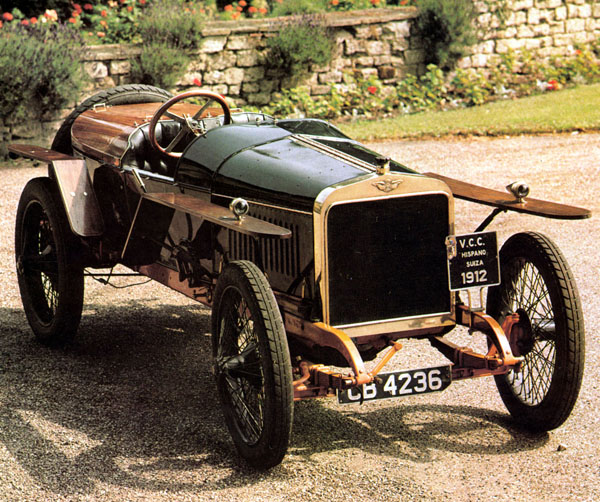The Hispano-Suiza Alfonso has been described as the first real sports car. Prior to its introduction previous sporting cars had been purpose built for competition racing and few were suitable for every day motoring.
The Alfonso did develop from a racing car and was named after King Alfonso XIII of Spain, where the car was produced. Some people mistakenly think that the marque was French because a number of Alfonsos were produced in a factory in Paris but this was merely to supply the French market as French buyers were far more affluent than Spanish buyers.
The car was extremely popular and had a long production life. In the period 1904 to 1943 Hispano-Suiza built some 19,000 vehicles in its Barcelona plant and the Alfonso accounted for many of these. Only 3,000 came out of the French plant as production there gradually concentrated on larger, more powerful V12 cylinder engines used in more exotic cars.
Every part of the Alfonso was well designed and the car was incredibly well balanced, the weight being carried almost equally by each wheel. Furthermore, the weight was modest as every component was designed with an unmistakable elegance. The designer’s artistry was matched only by France-domiciled Italian, Ettore Bugatti.
Weighing only 1,005kg the car had a rigid chassis of steel channel reinforced with hardwood and was fitted with soft springs, which gave a ride more like that of a modern car. The engine was a four-cylinder in-line, side-valve with a capacity of 3616cc and an exceptionally long stroke, which endowed it with a great deal of pulling power. It was in fact a slightly detuned version of the 1910 racer from which it was developed.
Cars of that time did not enjoy the benefits of synchromesh and gear changing required considerable skill to change ratios without mashing up the gears. The skill of the Hispano-Suiza precision engineers came to the fore when they could machine cogwheels with such precision that they slid in and out of mesh without sound or vibration. It had three forward ratios and a live rear-axle. Although braking was rather primitive it was possible for the driver to slow a Hispano-Suiza reasonably well on the gearbox alone. The car came in both an open and a closed version with either two or four seats and claimed a top speed of 112km/h.
A feature of the car was the large headlights which enabled it to be driven very safely at night. Early models had a gas burner but this was later changed to an electric lamp.
These lights sat either side of the large open radiator which was topped with a badge reflecting the nationality of the car’s manufacturer and designer by incorporating both the Spanish and Swiss flags.









